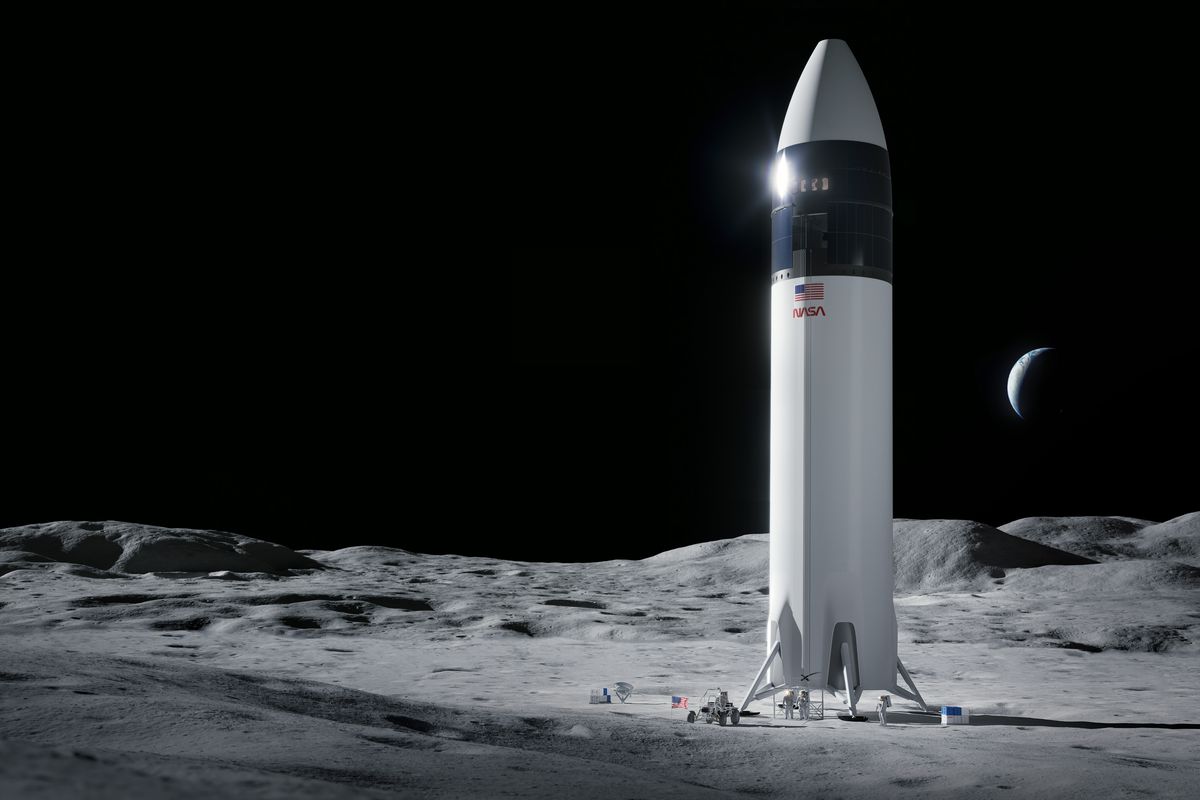Several months have been added to the deadline for returning American astronauts to the moon’s surface, according to NASA officials, who announced the extension on Tuesday. It is the first formal acknowledgement that the goal of achieving 2024, which was established while Donald J. Trump was president, would not be realised.
Instead, it will take place somewhere in 2025, according to Bill Nelson, a former Florida senator who was appointed by President Biden earlier this year to be NASA’s administrator. He attributed the move in timing to a lawsuit filed against the agency over the agency’s moon lander, which will be constructed by SpaceX, as well as problems with NASA’s Orion capsule, which is scheduled to transport men to lunar orbit.
The 50th anniversary of the landing of the last astronauts on the moon will be celebrated in December 2022. Since the Apollo 17 mission returned to Earth in 1972, the United States space programme has shifted its attention to other goals. However, the moon has come back into fashion at various points throughout time, especially under the administration of former President Trump.
The White House’s space council met in 2019 and Vice President Mike Pence announced a 2024 timetable for the first American astronauts to land on the moon in more than 50 years. Pence made the announcement at the meeting. Many in NASA and the space industry were taken by surprise when the new goal was announced. It was an urgent one: lift the first woman and next American man to the lunar surface “by whatever means necessary,” as he put it in his statement at the time. There was a driving factor in the fact that Americans are “engaged in a space competition now, just as we were in the 1960s,” which was in part a reference to China, which has set an ambitious goal of putting humans on the moon by 2030.
Since Mr. Pence’s address, there have been significant funding requests, new moon technology contracts, international agreements, and the creation of a brand — the Artemis programme. The Biden administration backed Artemis, and NASA maintained the 2024 deadline, despite the fact that Mr. Biden’s presidential transition team had judged it implausible. Mr. Nelson has so far adhered to the timeframe established by the previous government.
In addition, Mr. Nelson said on Tuesday at a press conference with reporters that “the Trump administration’s aim of a human landing in 2024 was not anchored in technological capability.”
NASA selected Elon Musk’s SpaceX, a private spaceflight business, to develop a lunar lander in April. The first two trips to the lunar surface will be made possible by Starship, a large, reusable rocket system that is now being developed in Texas by the SpaceX corporation. Humans will be transported to the moon on the second mission.
The political and technological impediments that have prevented NASA from attaining its 2024 objective have ranged from reluctance among politicians in Congress to engineering issues and delays with other technologies and spacecraft that NASA may also need in order to land people on the moon. In addition, the Covid epidemic had a part. The Space Launch System, the agency’s flagship moon rocket, is a multibillion-dollar effort that has been plagued by delays for years.
NASA, on the other hand, just surmounted a huge setback. Following a harsh and lengthy court battle with Jeff Bezos’ space business, Blue Origin, which had filed two complaints against NASA’s selection of SpaceX, the agency emerged triumphant. For about six months, the argument halted the moon lander programme, preventing NASA from collaborating with SpaceX on the construction of the Starship spacecraft.
In February, the Space Launch System is set to launch its first uncrewed mission, which will be the launch of a capsule named Orion, which is intended to take people to the moon’s vicinity but not to land there. A following trip, which would transport men around the moon and back, might take place in May 2024, a date that has been postponed from April 2023.
With the delays, as well as various additional technical needs, the cost of creating Orion has increased by $2.6 billion, for a total cost of $9.7 billion over the course of a dozen years, according to the company.
NASA has gained valuable time by delaying the moonshot until 2025, but it is still on an exceedingly optimistic timeline. The Space Launch System would deliver an Orion spacecraft with people to a location near the moon’s surface. It would dock with SpaceX’s Starship lander, which would then transport the astronauts to the surface in a way that has not yet been fully detailed.
Following SpaceX’s first two Starship trips, NASA intends to choose several businesses to develop lunar landers for regular journeys to the moon’s surface in the coming months. The agency is requesting $5.7 billion over the next six years to assist in funding such missions to and from the moon, but Congress has not demonstrated a willingness to approve the request so far.

